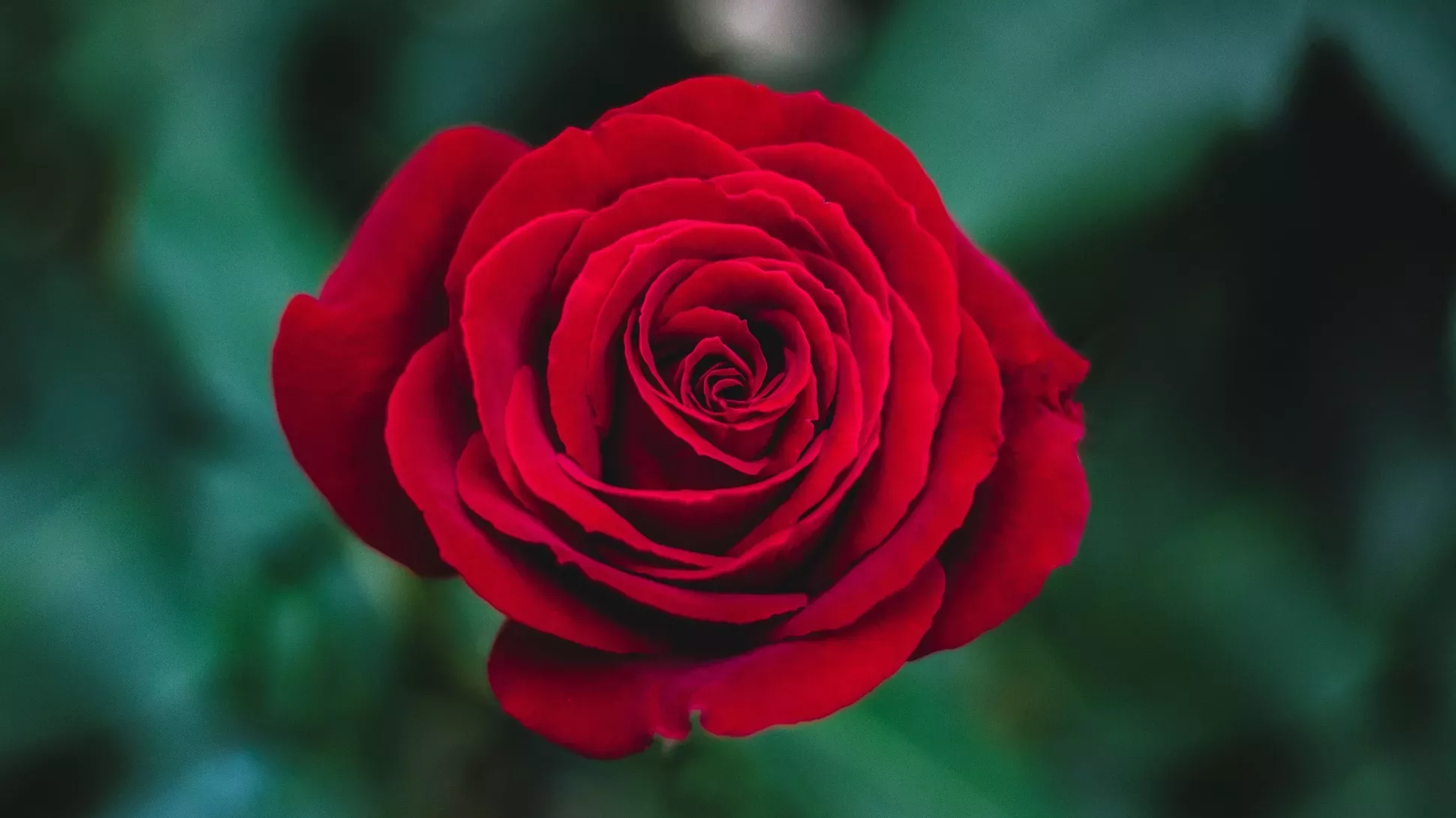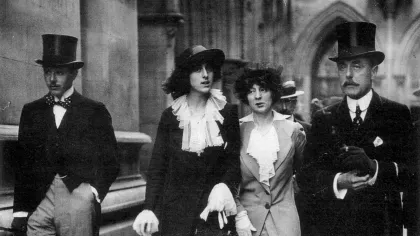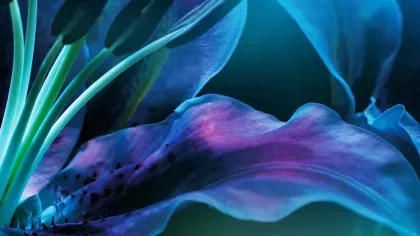23 October 2023
Four flowers that have become queer symbols
Discover the stories behind why these four iconic plants were adopted as symbols of resilience and resistance by the LGBTQ+ community.

We value plants for a number of reasons; their scientific intrigue, artistic inspiration and sheer beauty.
But plants are also rich in symbolism.
Flowers have come to represent everything from the language of love to subtle political statements.
So, it’s no surprise that they have become icons of the queer community – linked to gay and lesbian love, as well as celebrating transgender identity.
As part of Kew’s Queer Nature festival, discover some of the floral iconography that has been embraced by the LGBTQ+ community.
Violets
Possibly one of the oldest queer symbols, violets have been linked to lesbian love for over two and a half thousand years – as long as the very origins of the word.
The poet Sappho lived on the Greek island of Lesbos in the 6th century BCE and is celebrated as one of the greatest lyric poets of her time. While very little of her poetry has survived to the modern day, the fragments that remain have had an unquestionable impact on the lesbian community.
Much of her surviving work contains mentions of garlands of flowers, including violets as well as roses and crocuses. Depending on the translation, wreaths, garlands or diadems of violets being placed on the ’slender neck‘ of a girl.

Sappho’s passionate writing on the delicate beauty of woman led to both her name and her nationality becoming intrinsically linked to women who love women, ‘sapphic’ and ‘lesbian’ respectively. Towards the end of the 19th century, writers and poets came to celebrate Sappho as a predecessor of lesbian artists, with the violet as a lesbian symbol.
In the early part of the 20th century, lesbians in Paris who studied and celebrated the works of Sappho wore violets on their clothes. The 1926 play The Captive, which chronicled the tale of a woman in love with another woman but trapped in a false engagement with a man, featured the exchange of violets as a symbol of love.
The play was popular amongst the queer community in New York, with many women in the audience wearing violets on their person in a show of solidarity.

Pansies
It seems quite fitting that another flower intrinsically linked with LGBTQ+ history began life as a violet.
The garden pansy is a cultivar of several different violet species, including Viola tricolor. First cultivated in the 19th century, the pansy became the symbol for humanist and freethought movements, due to the name coming from the French word for thought, pensée.
But the pansy was also notably used throughout the 20th century as a somewhat derogatory term for homosexual men.
Along with buttercup, daisy, and other flowery language (including the somewhat nonspecific ‘horticultural lad’), pansy was a term used to refer to gay men, suggesting them to be non-masculine and delicate.

But during the 1920’s and 30’s, the flower lent its name to the Pansy Craze, a brief golden age for drag clubs and gay friendly bars predominantly in the USA.
With prohibition in full swing, the underground club scene in New York became a hot spot for LGBTQ+ nightlife. Even Hollywood saw a brief swell in casting of flamboyantly, if not openly, gay actors, such as drag artist Jean Malin.
As the 1930s and prohibition ended, police cracked down on queer friendly clubs, and the Hays Code brought an end to any overtly gay characters being portrayed on screen.
While pansy was once used as a pejorative, it is slowly being reclaimed by some in the gay community as a term of endearment.
Artist Paul Harfleet plants pansies at sites where homophobic and transphobic violence has occurred in London and across the world in an art piece called The Pansy Project.

Lavender
Violets are not the only purple flower linked to the queer community.
Into the 1930s and 40s, lavender became increasingly associated with gay men and lesbian women.
After the communist Red Scare in the 1940s and 50s, the USA went through a similar but lesser-known period of history called the Lavender Scare, where homosexual people throughout American society were ousted from government jobs due to their perceived communist sympathies.

As a result, the colour lavender became a symbol of empowerment within the LGBTQ+ community.
In 1969, the president of the National Organization for Women claimed lesbian membership of the group was a ’Lavender Menace‘, and would threaten the progress of the feminist movement.
Throughout the 1970s and 80s, subsequent to the Stonewall Riots and the advent of gay liberation, pink slowly rose to become the defacto colour for gay pride. But there are many who still wear lavender colours as a symbol of remembrance and resistance.

Roses
Roses are synonymous with love and romance all over the world.
But in Japan, roses became a symbol for gay men in the 1960s.
Previously a more pejorative word, the rose was reclaimed in 1961, with the publication of ‘Bara Kei’ (Killed by Roses), a collection of photos of gay writer Yukio Mishima by photographer Eikoh Hosoe.
This inspired the creation of Asia’s first commercially produced gay magazine, ‘Barazoku’ (Rose Tribe), which helped popularise the term ‘bara’ for gay men, and cemented the symbology of the rose in the gay community.

While the term bara is now used less in Japan, the rose is still seen as an icon of gay men in Japan.
Roses are also used as a symbol by the trans community, especially with regards to Trans Day of Remembrance.
The phrase “give us our roses while we’re still here” is used as a reminder that while it is good to remember those lost to violence, it is better for us all to make efforts to make the world a safer place for the trans community.

The language of flowers
These are just a few of the flowers that have been adopted as symbols by the queer community, but it’s not exhaustive.
There’s many other plant symbols; like the green carnation popularised by Oscar Wilde and a novel inspired by him, and the lily which became a lesbian counterpart to the rose in the pages of Barazoku.
Today, flowers are commonly seen as a part of vibrant Pride displays, serving as a reminder of their history as symbols of solidarity, resistance and empowerment.



